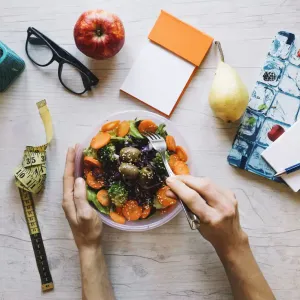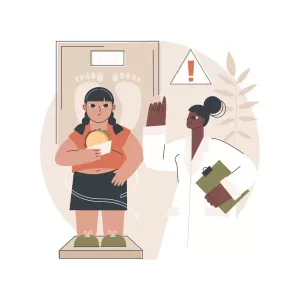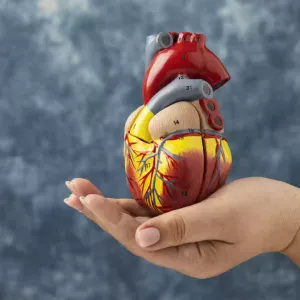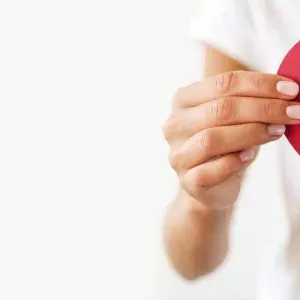

Our Review Process
Our articles undergo extensive medical review by board-certified practitioners to confirm that all factual inferences with respect to medical conditions, symptoms, treatments, and protocols are legitimate, canonical, and adhere to current guidelines and the latest discoveries. Read more.
Our Editorial Team
Shifa Fatima, MSc.
Author
Dr. Apoorva T, MHM.
MEDICAL ADVISOR
5 Foods to Avoid If You Have Kidney Disease and Diabetes
Diabetes and kidney disease are quite common as diabetes often triggers kidney damage in patients. High blood sugar levels damage the fine network of capillaries in the kidney, preventing it from properly filtering out wastes produced after metabolic pathways and digestion. These wastes can load up within the body that are harmful to other organs. This condition is often known as Diabetic Kidney Disease (DKD).
If you are living with this kidney condition with diabetes, you should follow a strict diet plan for diabetes and kidney disease, no matter how challenging it may seem. It is one of the key steps in reducing further damage to the body. Read more about diabetic kidney disease diet in this article. Know about diabetes treatment.
Table of Contents
Diet for Diabetes with Chronic Kidney Disease
The kidney disease and diabetes diet should exclude certain nutrients, some of which are noted below.
1. Sodium
Sodium is essential in maintaining fluid balance. However, excess of it can increase blood pressure and strain the kidneys more. Sodium is chiefly found in our table salt and should be consumed not more than 2,300 mg per day. Excess sodium may cause edema (swelling due to fluid accumulation in the body) and hypertension. Also know more about diabetes diet chart
2. Potassium
Potassium is essential for controlling heart muscle contractions, transmitting nervous signals, fluid balance within the body, maintaining heart rate, etc. But DKD patients can’t excrete potassium out of their bodies. It increases body potassium, causing hyperkalemia (too much potassium), heart disorder, and respiratory distress.
3. Phosphorus
Phosphorus is essential for bone and tooth growth. It is found in our genetic material and energy units (ATP, GTP). Phosphorus forms the plasma membrane and regulates brain and nerve functions. Patients with kidney disorders can’t remove excess phosphorus effectively from the body. Too much phosphorus can chelate out calcium from our body, weakening the bones and putting pressure on the kidneys. A phosphorus level of 800 mg to 1200 mg per day is recommended.
4. Proteins
Proteins are essential for body growth and proper functioning. Healthy sources of proteins are eggs, chicken, fish, and milk. For patients with renal failure, protein intake is recommended, but it can prove harmful for other Chronic Kidney Disease (CKD) patients. Excess protein is excreted out through the kidneys, and it puts undue pressure on kidney functions. Also know more about diabetes diet chart.
What can a Person with Diabetes with Chronic Kidney Disease eat?
Foods good for kidney disease and diabetes are as follows:
- Low-salt fruits like grapes, pineapples, cranberries, blueberries, plums, cherries
- Vegetables like cauliflowers, bell peppers, turnips, radish, onions, aubergine, and cabbage
- Lean proteins like egg whites, sea bass, and skinless chicken breasts or plant proteins
- Carbohydrates like whole grains (buckwheat, bulgur), white bread, pasta, unsalted crackers, bagels
- Beverages like unsweetened tea, plain or sparkling water and sugar free drinks. Also read about sugar free sweeteners
- Macadamia nuts (low in sodium and potassium, but high in healthy fats, copper, iron, vitamin B)
- Arugula (high in vitamin K, manganese and calcium, and very low in sodium and phosphorus)
Also read about the benefits of eating grapes in diabetes
Foods to Avoid if you have Kidney Disease and Diabetes
Following are some of the foods to avoid with kidney disease and diabetes:
1. Processed Meat
Processed meats are those that have been cured by drying, smoking, fermenting and salting to add extra flavor and texture. Such treatments also increase the product shelf-life. But processed meats like deli meats, bacon, jerky, sausages, corned beef, pepperoni, and hotdogs can be harmful to persons with kidney and diabetes disorders as these items are high in salt and protein content. Also know about is pineapple good for diabetes.
The chart given below shows the nutritional content of meat items:
2. Dark-colored Sodas
Dark-colored sodas like colas contain an excessive amount of phosphorus. Phosphorus is added to them for preserving the color, increasing shelf life, and for extra flavor. This phosphorus is present as salts and inorganic phosphates as opposed to protein-bound form, which occurs naturally. It is more readily absorbed by blood and body cells. Dark-colored soda is also high in sugar and can spike blood sugar levels, cause itching, and damage the kidneys considerably.
3. Dried Fruits
Dried-fruits are an excellent source of fortified proteins. They are made by drying and squeezing the water out from fruits and adding salts and condiments to make them tasty.
a) Prunes, Dates and Raisins
Fruits like dates, raisins, and prunes are high in potassium, fats, and sugar, hence not ideal for diabetes and kidney disease as they may increase blood sugar and damage the kidneys. Read more about benefits of dates for diabetes.
b) Apricot
Apricots are delicious and rich in vitamin A, vitamin C, and plant fibers. But they are also rich in potassium, which is more concentrated in dried ones.
4. Canned Foods
Canned foods like soups, canned tuna, seafood, beef and meat products, canned vegetables, stocks are easily available in the market and are very convenient to use and are quick sources of tasty food. These canned products contain brined vegetables and meat or fish with added condiments to add flavor. But they are also high in salts and potassium, which is added as a preservative. This can be highly toxic for persons with kidney and diabetes and should be avoided. But, one can use them by draining out the liquid and rinsing them to wash out excess salts. Also read about sugarless fruits.
5. Pickles, Olives, and Relish
These types of canned foods. Pickles and relishes contain excess salts for curing and pickling.
Olives are fermented in brine to render them tangy and less bitter in taste.
You may also need to avoid the following sweet and salty foods:
- Chocolate Regular sugar
- Ice cream
- Condiments
- Canned foods
- Meat tenderizer
- Marinades
- TV dinners
- Salted chips and snacks
- Nuts
- Molasses
- Onion, garlic or table salt
- Pizza
- Baked goods
- Candy
- Syrup
- Honey

Bottomline
If you are a person with kidney and diabetes disorder, you should avoid canned, pre-cooked, and processed food products. Instead, opt for fresh, homemade meals that cut down sodium, potassium and phosphorus, and proteins and save the kidneys from getting stressed. You should limit the intake of dried fruits and pickles and, if possible, completely avoid aerated sodas. Foods right to eat with kidney disease and diabetes significantly reduce kidney damage with time. They also help prevent damage to other organs caused by the accumulated toxic materials. Also read about how to prevent diabetes.
FAQs
1. What should a diabetic with kidney disease eat for breakfast?
Whole grains, low fat and low sodium dairy, soy milk, non-starchy vegetables, and fresh non-marinated meat preparations in moderation only make up a good breakfast for a person with diabetes and kidney disease.
2. Which Foods are Good for Kidney Disease and Diabetes?
Given below is a list of foods that you can consume if you are suffering from diabetes and kidney disease:
- Among fruits, plums, berries, apples, grapes, and cherries are good options.
- Good sources of proteins include unsalted seafood, lean meats like fish and chicken, and eggs.
- Although carbohydrates are good avoid some sources of carbs like unsalted crackers, bagels, pasta, and sandwich buns can be good for you.
- Vegetables that are good include turnips, cauliflower, eggplant, and onions.
- Drinks like unsweetened tea, green tea, and water are the best to quench your thirst.
References
- https://www.healthline.com/nutrition/foods-to-avoid-with-kidney-disease#14.-Packaged,-instant,-and-premade-meals
Disclaimer
This website's content is provided only for educational reasons and is not meant to be a replacement for professional medical advice. Due to individual differences, the reader should contact their physician to decide whether the material is applicable to their case.








